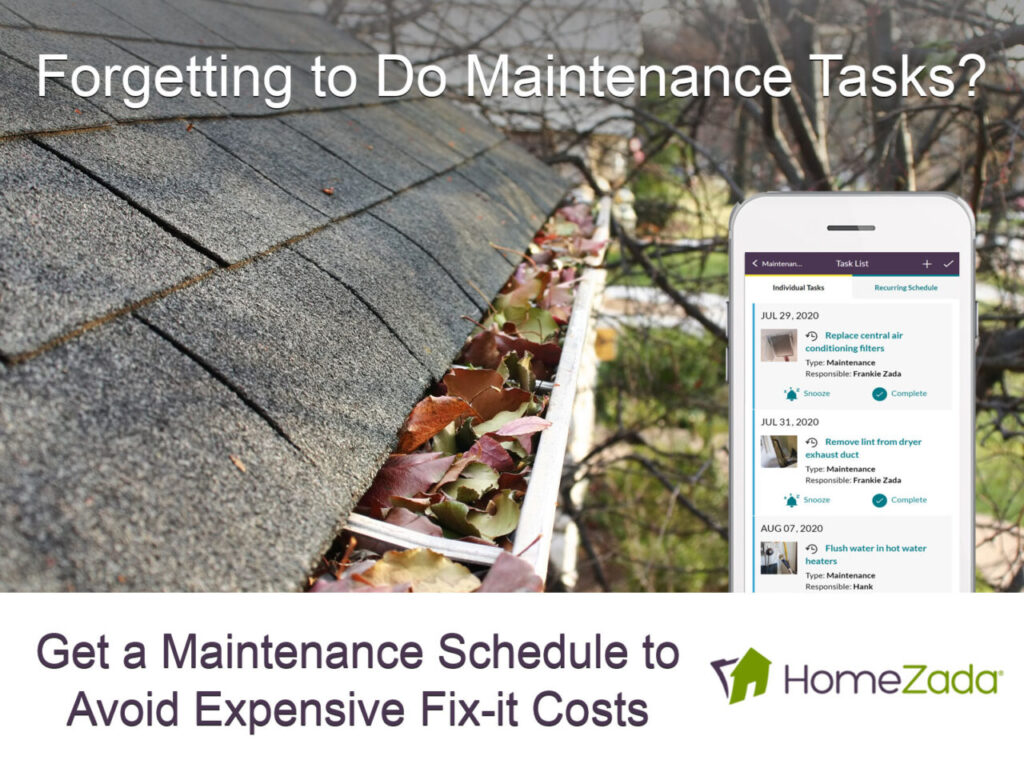Major home repairs, such as burst pipes, are one thing; the problem is staring you in the face and you’ve got to deal with it. But gutters filling up with debris? An annoying leaky faucet? Nah, that can wait until tomorrow…
The best thing you, as a homeowner, can do for yourself is to have a maintenance schedule.
Maintaining a home can occasionally be stressful. It’s easy to lose sight of the bigger picture amid daily responsibilities, deep cleanings, and home finance hassles.
If dishes and laundry are piling up, how do you find the energy for fun DIY projects and home improvements?
A set schedule for caring for your home, both for small and big things, is the key to taking on bigger projects like remodeling your kitchen. It can also streamline your home’s maintenance and keep you in control.
1. Make a Sustainable Checklist for Home Maintenance
Start with the big picture before you begin scheduling household chores. It’s essential to know what needs to be done and when it needs to be done.
Making a schedule for your home maintenance tasks makes perfect sense because you can be sure that everything that needs to be done will be done on schedule.
In order to make your life a little bit easier, spend a few hours over the next few days making your own schedule. Here’s how to create your own home maintenance schedule.
2. Build your checklist
The first step is to create a comprehensive checklist.
We advise doing this task with a partner or a reliable friend. It can be a little frightening to face the full scope of what it takes to care for your home. You’ll discover that dividing the workload among your family and making plans as a group makes the process simpler.
Set aside some time to sit down with those you live with and make your checklist in order to lessen your mental workload. We advise setting a year’s worth of goals.
3. Develop a Schedule for Home Maintenance
With a checklist in hand, you are aware of the tasks you want to prioritize. Now, what’s your schedule?
When it comes to homecare tasks, everyone has different standards. Making and following a schedule is, therefore, very personal.
We recommend assigning categories to your checklist that make sense to you. Consider tasks that are daily, weekly, monthly, seasonal, etc.
When you have a list of all the tasks and the frequency at which they must be completed, you can begin to add them to a calendar. That can be a paper or digital calendar, it doesn’t really matter. What’s most important is that it’s a calendar that you already use.
Begin by adding the tasks that must be completed during particular months. Next, add any tasks that must be completed during particular seasons. Lastly, fill in the remaining spaces on your calendar.
To avoid having a very busy month one month and nothing the next, you should aim to fill each month with a similar amount of work.
4. Add reminders
Your schedule is now essentially set. Keep this somewhere you can check it frequently. But to make sure that you’re actually doing all of this maintenance, add reminders.
Making a schedule for your home’s maintenance is simple; following it is much more difficult. As a result, you should add reminders to your chore or cleaning schedule at the beginning of each month to make sure you complete the tasks for that month.
Add any tasks that might require outsourcing to your schedule once you have a plan in place.
5. Take note of services you’ll need to hire out for
Maintaining your home’s health is crucial. Your home is safe and you’ll protect your investment if you set aside time once a year to have your furnace and air conditioner serviced.
Did you know that regular maintenance can reduce your annual energy costs by up to 30%? Seems like an easy choice, no? Also, we recommend yearly gutter and air duct cleaning.
6. Remember to change out your air filter
Your furnace’s air filter needs to be changed routinely, especially if anyone in your family has allergies. It’s important to at least stick to the general recommendation to change it every two to three months for the best air quality.
7. Get a home audit
You don’t have to be considering selling your house in the future to make an investment in a home audit.
The advice of a professional might enable you to identify problems that aren’t yet obvious to the untrained eye. This gives you a chance to deal with any issues before they become more expensive to fix.
8. Think About Paying for a Few Routine Services
Let’s face it, smaller, more frequent tasks can get in the way of larger, more complex ones. Gutter cleaning? No fun. But once it’s done, you won’t have to think about it for some time.
But that sink full of dishes? It’s a neverending nightmare!
Keep in mind that if you’re someone who suffers from a chronic illness or executive dysfunction disorder such as ADHD, those maintenance tasks may be overwhelming. There’s no shame in getting assistance with routine tasks.
Ask your family and friends for help, or hire a cleaning crew to come in once or twice per month.
9. Maintain an ongoing list of repairs
Finally, it’s a good idea to keep a separate record of the repairs that need to be done in addition to your home maintenance checklist so as to prevent them from slipping through the cracks.
Keep in mind that the time of year may also affect some repairs. Before spring floods, you don’t want to be stuck with a broken sump pump, and as winter approaches, you don’t want to have broken gutters.
4 Ways to Budget for Home Maintenance Costs


